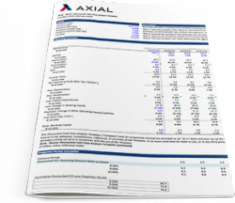
How to Arrive at a Realistic Valuation for Your Business
Every CEO considering a sale wants to know the answer to one question: how much is my company worth? But…
Whether you’re selling, acquiring, investing in, spinning off, or advising a business, there’s one number that transcends all others in importance: the company’s valuation.
There are several ways to value a business: the discounted cash flow, trading comparables, transaction comparables, sum of the parts, and leveraged buyout analyses, among others. However, by far the most popular is the discounted cash flow (“DCF”) methodology. The DCF is grounded in a simple concept: that the value of any given company is equal to the sum of all the future cash flows of that company, discounted to reflect their value today.
Should you want to sell, or conversely, buy, a business, this is the price that you would ask for in order to break even.
Its wide usage stems partially from its reliance on the intrinsic value of the company. In other words, unlike other valuation techniques such as trading or transaction comparables, it filters out the effects of market sentiment.
Unfortunately, building a DCF model is both exceptionally complicated and very time consuming, taking between several hours and several days to complete.
This is why we decided to build a free downloadable DCF excel template and make it available for our readers. Access the template here:
